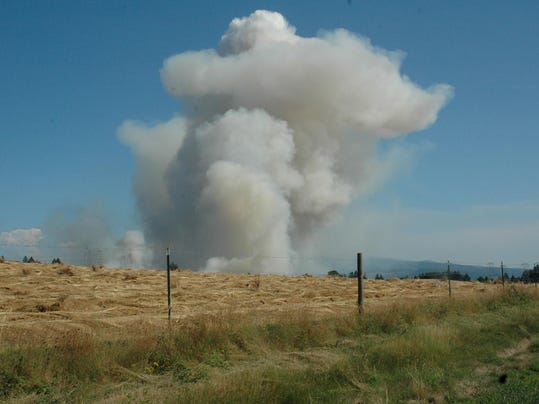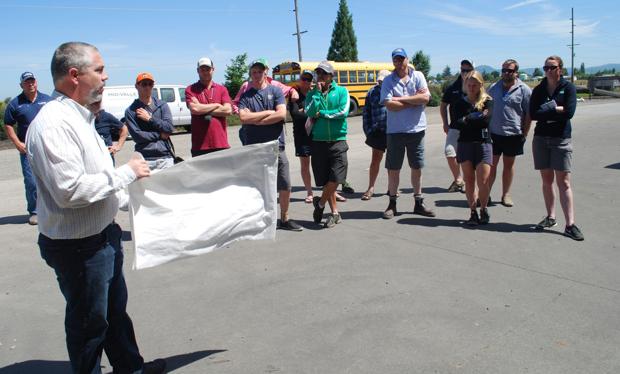Field burning starts early as heat hastens harvest

Field burning takes place at a grass seed field in the Lyons area in 2011. Field burning started Aug. 1 that year.(Photo: Statesman Journal file)
Field burning has kicked off early in Oregon’s Willamette Valley, as hot weather and drought conditions lead to an early grass seed harvest.
A test fire was conducted in the Silverton area Tuesday, with open field burning expected to follow.
“It’s probably two weeks earlier than a normal year,” said Roger Beyer, executive director of the Oregon Seed Council.
Grass seed is big business in Oregon, especially in the Willamette Valley counties of Linn, Benton and Marion.
Farmers burn fields to clear weeds and fight pests and erosion without chemical pesticides and herbicides.
But the plumes of smoke can enter communities, causing health problems and even traffic accidents.
As many as 200,000 acres per year were burned in the early 1980s, drawing thousands of complaints each year. Then, in August 1988, smoke caused low visibility on Interstate 5 near Albany, causing a massive pileup that killed seven people and injured 38.
In 1991, the Legislature established a phased-in cap on field burning of 40,000 acres per year.
And in 2009, lawmakers banned it entirely, except for a small area in Marion County, mostly near Silverton, where steep terrain and certain types of seed make alternatives difficult.
In the five years since, the industry has seen increased disease and pest problems, Beyer said.
“We predicted that and it’s coming true. The biggest one right now we’re facing is slugs,” he said. “We’re talking tens of millions of dollars of crop loss and treatment loss.”
Farmers also are using more chemicals, Beyer said.
Complaints, however, have fallen, from 3,783 in 1988 to just 76 last year, according to the Oregon Department of Agriculture, which regulates field burning.
The state only allows burning when conditions promise to lift smoke up and away from populated areas, said John Byers, the ODA program manager who oversees field burning.
And the State Fire Marshal bans field burning when two of three conditions exist: Temperature over 95 degrees, humidity of 30 percent or less, or winds of 15 miles per hour or greater, Byers said.
“We go to such lengths to monitor the weather,” he said. “If we issue a permit for a burn, they have one hour in which to light it.”
Last year, 12,304 acres were burned, and ODA estimates communities were impacted by smoke for a total of 30 hours.
Read the original article on the Statesman Journal here.





